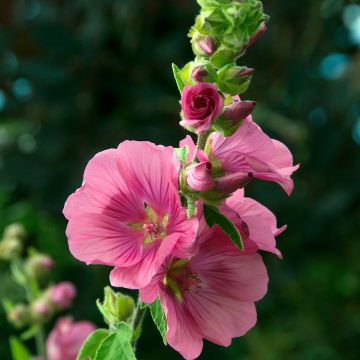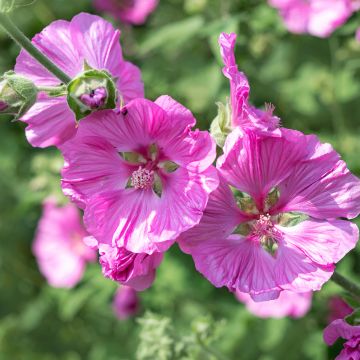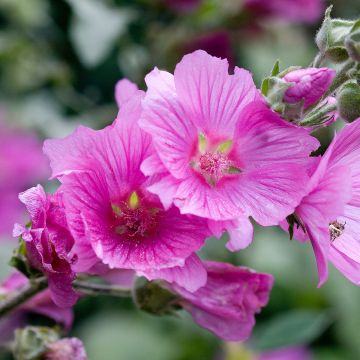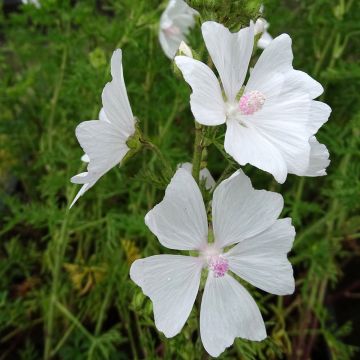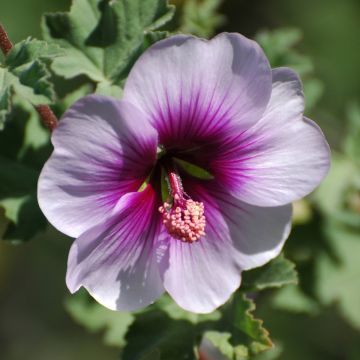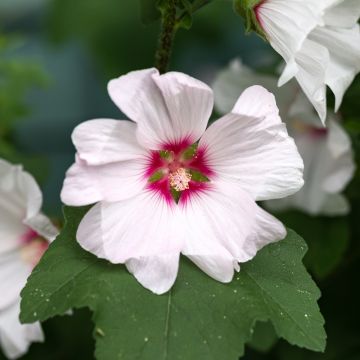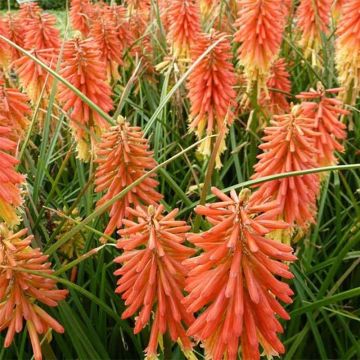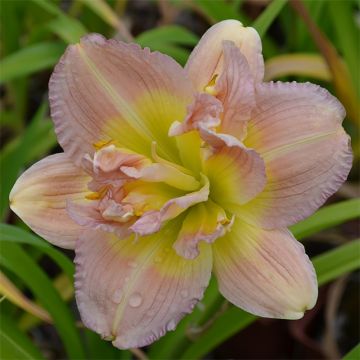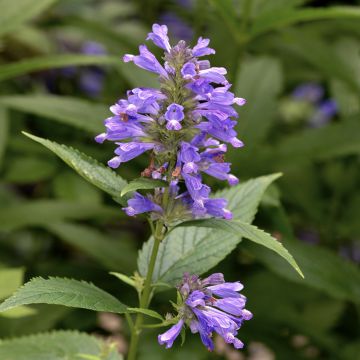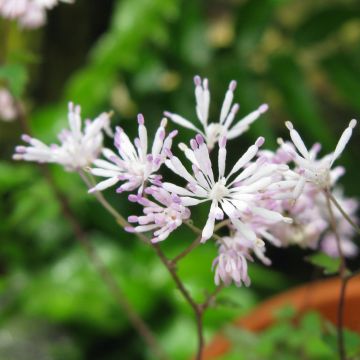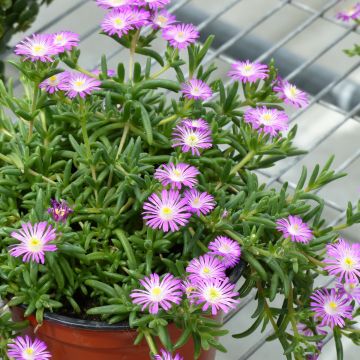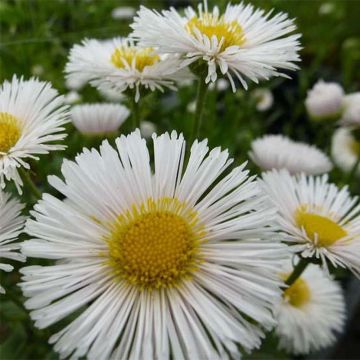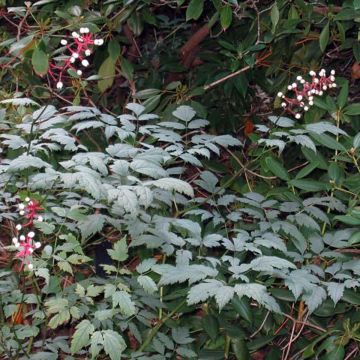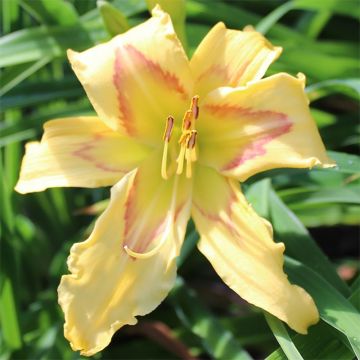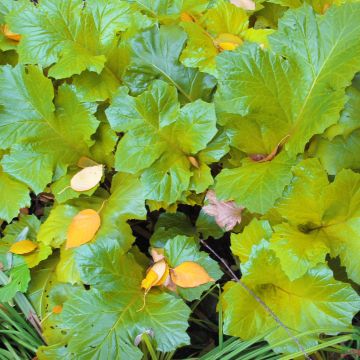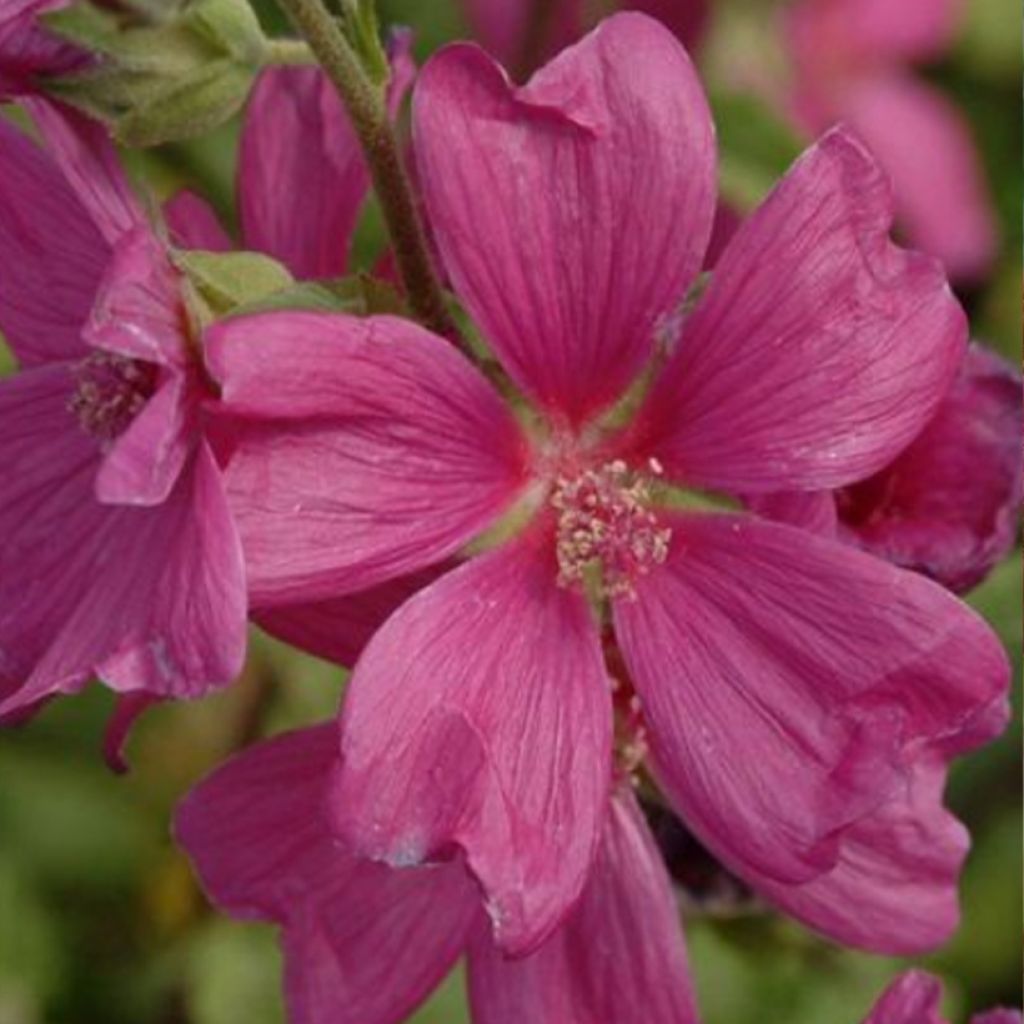

Lavatera CHAMALLOW - Tree mallow
Lavatera CHAMALLOW - Tree mallow
Lavatera clementii 'Inovera' CHAMALLOW®
Tree mallow
Why not try an alternative variety in stock?
View all →This plant carries a 24 months recovery warranty
More information
We guarantee the quality of our plants for a full growing cycle, and will replace at our expense any plant that fails to recover under normal climatic and planting conditions.
From €5.90 for pickup delivery and €6.90 for home delivery
Express home delivery from €8.90.
Delivery to Corse prohibited: UE law prohibits the import of this plant from mainland France to Corse as part of the fight against Xylella fastidiosa. Please accept our sincere apologies.
More information
Does this plant fit my garden?
Set up your Plantfit profile →
Description
Lavatera 'Inovera' or Chamallow is a particularly compact and floriferous shrubby mallow that blooms in early summer. It quickly forms a dense bush, as wide as it is tall, on which numerous intensely pink and truly luminous flowers bloom. Its attractive light green velvety foliage remains appealing throughout the season. It is an undemanding plant, quite charming in a shrub border or a container on the terrace.
Lavatera 'Inovera' is a French horticultural selection from INRA dating back to 2002. Lavateras belong to the large family of Malvaceae, they are cousins of hollyhocks and roses. It is a genus that includes many species, some more woody than others, and can be annual, biennial or perennial. They are native to various temperate regions of the globe but are mainly found in Mediterranean climates. Shrubby mallows are generally quite short-lived, living only 3 or 4 years, sometimes longer when regularly pruned, but they easily multiply by cuttings.
The 'Chamallow' mallow is a shrubby hybrid. The plant has a rounded and branched bushy habit from the base, as wide as it is tall. It reaches an average of 1.35 m in all directions within two years, up to 1.50 m depending on how severely it is pruned in early spring. This abundant shrub produces 4-5 cm diameter flowers, with single cups composed of rich, yet vibrant pink petals, veined with a darker pink. These flowers are ephemeral but numerous, and they continuously bloom between June and July. The foliage consists of rounded, 3 to 5 cm diameter, slightly velvety, fairly light green leaves. This mallow can withstand temperatures down to -10°/-12°C in a healthy and well-drained soil. Young plants tolerate frost better than mature specimens.
The 'Chamallow' shrubby mallow charms with its simplicity and beautiful pink flowering. In the garden or on the terrace. It looks beautiful in a border with lavenders, rockroses, and dwarf abelias. It also pairs well with white, pink, or mauve ground cover roses. It is a full-sun plant that tolerates partial shade in hot climates and shows more longevity in well-drained soil. It makes a romantic combination with sages, or with its annual cousins, the Malopes (Malope 'Glacier Fruits Mixed') and the Mallow.
Report an error about the product description
Lavatera CHAMALLOW - Tree mallow in pictures
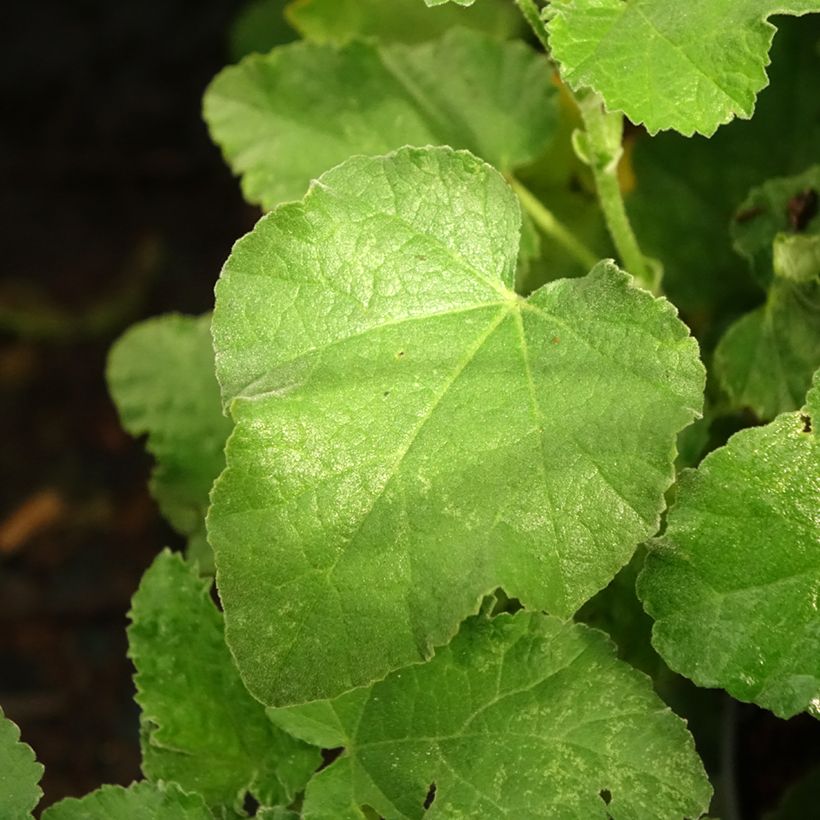

Plant habit
Flowering
Foliage
Botanical data
Lavatera
clementii
'Inovera' CHAMALLOW®
Malvaceae
Tree mallow
Lavatera clementii CHAMALLOW, Lavatera 'Inovera', Lavatera CHAMALLOW
Cultivar or hybrid
Other Lavatera - Tree Mallow
Planting and care
Plant the 'Chamallow' shrubby Lavatera in full sun (or partial shade in hot and sunny regions), in deep, not too rich soil, moist to dry, but above all well-drained. This plant tolerates limestone and the rocky soil very well, and its deep root allows it to withstand summer drought. Protect it from cold and drying winds in very cold regions. Don't hesitate to cut flowers: pruning stimulates growth and makes the plants stronger. At the beginning of winter, prune the stems to 30 cm above the ground, above the first buds, and if the winter is very cold, mulch the base of your plants. You can also give them a shaping pruning in early spring. These plants have a lifespan of 4 to 5 years. In large flower beds, replace one plant out of three each year. Every year, as soon as the buds swell in March, leave only two or three buds at the base of the new shoots, to form a sturdy framework. Remove excess or poorly positioned old wood. Lavatera can be susceptible to rust in humid climates, root rot, and fungal infections from overly clayey and compact soil.
Planting period
Intended location
Care
This item has not been reviewed yet - be the first to leave a review about it.
Summer flowering perennials
Haven't found what you were looking for?
Hardiness is the lowest winter temperature a plant can endure without suffering serious damage or even dying. However, hardiness is affected by location (a sheltered area, such as a patio), protection (winter cover) and soil type (hardiness is improved by well-drained soil).

Photo Sharing Terms & Conditions
In order to encourage gardeners to interact and share their experiences, Promesse de fleurs offers various media enabling content to be uploaded onto its Site - in particular via the ‘Photo sharing’ module.
The User agrees to refrain from:
- Posting any content that is illegal, prejudicial, insulting, racist, inciteful to hatred, revisionist, contrary to public decency, that infringes on privacy or on the privacy rights of third parties, in particular the publicity rights of persons and goods, intellectual property rights, or the right to privacy.
- Submitting content on behalf of a third party;
- Impersonate the identity of a third party and/or publish any personal information about a third party;
In general, the User undertakes to refrain from any unethical behaviour.
All Content (in particular text, comments, files, images, photos, videos, creative works, etc.), which may be subject to property or intellectual property rights, image or other private rights, shall remain the property of the User, subject to the limited rights granted by the terms of the licence granted by Promesse de fleurs as stated below. Users are at liberty to publish or not to publish such Content on the Site, notably via the ‘Photo Sharing’ facility, and accept that this Content shall be made public and freely accessible, notably on the Internet.
Users further acknowledge, undertake to have ,and guarantee that they hold all necessary rights and permissions to publish such material on the Site, in particular with regard to the legislation in force pertaining to any privacy, property, intellectual property, image, or contractual rights, or rights of any other nature. By publishing such Content on the Site, Users acknowledge accepting full liability as publishers of the Content within the meaning of the law, and grant Promesse de fleurs, free of charge, an inclusive, worldwide licence for the said Content for the entire duration of its publication, including all reproduction, representation, up/downloading, displaying, performing, transmission, and storage rights.
Users also grant permission for their name to be linked to the Content and accept that this link may not always be made available.
By engaging in posting material, Users consent to their Content becoming automatically accessible on the Internet, in particular on other sites and/or blogs and/or web pages of the Promesse de fleurs site, including in particular social pages and the Promesse de fleurs catalogue.
Users may secure the removal of entrusted content free of charge by issuing a simple request via our contact form.
The flowering period indicated on our website applies to countries and regions located in USDA zone 8 (France, the United Kingdom, Ireland, the Netherlands, etc.)
It will vary according to where you live:
- In zones 9 to 10 (Italy, Spain, Greece, etc.), flowering will occur about 2 to 4 weeks earlier.
- In zones 6 to 7 (Germany, Poland, Slovenia, and lower mountainous regions), flowering will be delayed by 2 to 3 weeks.
- In zone 5 (Central Europe, Scandinavia), blooming will be delayed by 3 to 5 weeks.
In temperate climates, pruning of spring-flowering shrubs (forsythia, spireas, etc.) should be done just after flowering.
Pruning of summer-flowering shrubs (Indian Lilac, Perovskia, etc.) can be done in winter or spring.
In cold regions as well as with frost-sensitive plants, avoid pruning too early when severe frosts may still occur.
The planting period indicated on our website applies to countries and regions located in USDA zone 8 (France, United Kingdom, Ireland, Netherlands).
It will vary according to where you live:
- In Mediterranean zones (Marseille, Madrid, Milan, etc.), autumn and winter are the best planting periods.
- In continental zones (Strasbourg, Munich, Vienna, etc.), delay planting by 2 to 3 weeks in spring and bring it forward by 2 to 4 weeks in autumn.
- In mountainous regions (the Alps, Pyrenees, Carpathians, etc.), it is best to plant in late spring (May-June) or late summer (August-September).
The harvesting period indicated on our website applies to countries and regions in USDA zone 8 (France, England, Ireland, the Netherlands).
In colder areas (Scandinavia, Poland, Austria...) fruit and vegetable harvests are likely to be delayed by 3-4 weeks.
In warmer areas (Italy, Spain, Greece, etc.), harvesting will probably take place earlier, depending on weather conditions.
The sowing periods indicated on our website apply to countries and regions within USDA Zone 8 (France, UK, Ireland, Netherlands).
In colder areas (Scandinavia, Poland, Austria...), delay any outdoor sowing by 3-4 weeks, or sow under glass.
In warmer climes (Italy, Spain, Greece, etc.), bring outdoor sowing forward by a few weeks.

































